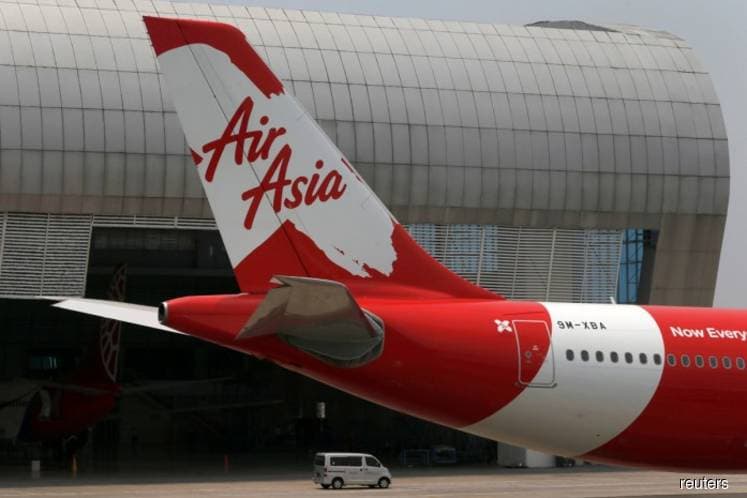
This article first appeared in The Edge Financial Daily on August 22, 2019
KUALA LUMPUR: AirAsia X (AAX) is likely to post a loss for the March to June period as it is a seasonally weak quarter, made worse by a poor-yield environment and gloomy outlook, said analysts.
Maybank Investment Bank Bhd analyst Mohshin Aziz anticipates the airline to post a core net loss of RM105 million for the second quarter of financial year 2019 (2QFY19), which would bump the core net loss for the first half of FY19 (1HFY19) to RM135 million.
“We forecast the upcoming 2QFY19 results will deliver a big loss as it is a seasonally weak quarter, compounded by a weak yield environment. The outlook is also weak; the new departure levy (from Sept 1) and possible reimbursement of the PSC (passenger service charge) shortfall might deplete cash on the balance sheet and increase debt more than we expect,” Mohshin said in a recent client note.
The low-cost long-haul affiliate of AirAsia Group Bhd is expected to release its 2QFY19 ended June 30 results today, and AirAsia Group next week.
Come Sept 1, passengers flying out of the country will pay the new departure levy ranging from RM8 to RM150, in addition to existing taxes such as the PSC, which varies from RM35 to RM73 according to the geographic region. There is also a regulatory service charge of RM1.
“The 2QFY19 load factor declined by 1.4ppt (percentage point) year-on-year (y-o-y) to 80.2% despite a capacity decrease of 5.7% y-o-y. This shows that market demand is soft and the yield will likely continue to be negative. The yield declined by 2% y-o-y in 1QFY19 and we think it will hover at the same quantum in 2QFY19. Based on this parameter, we forecast a 2QFY19 core net loss of RM105 million (-43% y-o-y). This could bring its 1HFY19 core net loss to RM135 million (-13% y-o-y),” said Mohshin.
MIDF analyst Adam Mohamed Rahim is of the view that the new departure levy would have a minimal impact on AAX.
“Based on our analysis, the percentage of the departure levy charged from the total flight ticket is rather insignificant. For instance, for full-service carriers such as Malaysia Airlines, the departure levy makes up around 1.1% and 2.5% on average of the flight ticket price for economy-class and business-class passengers respectively. The portion of the departure levy [of] the total ticket price would be smaller for further destinations such as Europe and North America.
“As for low-cost carriers such as AirAsia, the percentage of the departure levy [of] the total ticket price is still immaterial at 1.5% on average for normal fares. Although the percentage is slightly higher at 3.7% for premium flatbed passengers for AAX, it is important to note that seats for this class constitute less than 5% of total seats offered for sale,” Adam said in an email response.
He did not provide projections for AAX’s 2QFY19 results, but said the outlook will hinge on the movement of jet fuel prices which gravitates in tandem with Brent crude prices. MIDF has maintained its “neutral” call with a target price (TP) of 22 sen.
However, Maybank is keeping to its “sell” call with an unchanged TP of 14 sen.
Mohshin said the risk of an equity call cannot be ignored due to the limited borrowing capacity of AAX’s balance sheet. The airline’s net gearing as at end-March 2019 was 7.2 times, and this could swell further as it might have to reimburse Malaysia Airports Holdings Bhd for the PSC collection shortfall, he said.
“We deem AAX’s risk-reward as unfavourable and rank it as the riskiest Asia-Pacific airline,” he commented.
AAX closed one sen or 4.88% lower yesterday at 19.5 sen, with 23.22 million shares traded, with a market capitalisation of RM808.89 million.